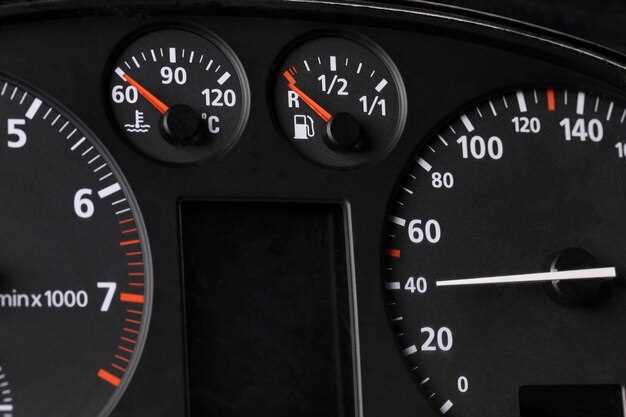
In the world of heavy-duty trucks, performance is paramount. The ability to accelerate efficiently and respond promptly to driver inputs can significantly impact both the driving experience and overall productivity. One key aspect that often gets overlooked is throttle response. Enhancing throttle response not only improves driver control but also optimizes engine performance, leading to increased efficiency and better handling under various conditions.
The throttle response of your truck refers to how quickly and effectively the engine responds to the accelerator pedal. A sluggish response can frustrate drivers and hinder performance during critical moments, such as merging onto highways or towing heavy loads. By focusing on improving this aspect, truck owners can unlock new levels of capability and responsiveness in their vehicles.
Several modifications and techniques can be employed to enhance throttle response. Everything from tuning the engine management system to upgrading the throttle body and air intake system can make a significant difference. Understanding these options allows truck owners to make informed choices that align with their performance goals. In this article, we will explore various methods and best practices for upgrading your truck’s throttle response, ensuring you get the most out of your driving experience.
Upgrade Your Throttle Body for Increased Airflow

Upgrading your throttle body can significantly enhance your truck’s throttle response and overall performance. The throttle body is responsible for regulating the amount of air entering the engine, and improving its design allows for better airflow, which is essential for optimizing combustion efficiency.
Increased Diameter: One of the main advantages of upgrading the throttle body is the potential for a larger diameter. A bigger throttle body allows more air to enter the engine, which can lead to improved horsepower and torque. This is particularly beneficial for trucks used in towing or off-road conditions, where additional power is often needed.
Improved Design: Many aftermarket throttle bodies feature enhanced designs that minimize turbulence and obstruction, resulting in smoother airflow. This reduction in turbulence not only improves performance but also can lead to better fuel efficiency. Look for throttle bodies that are engineered for increased velocity, as this contributes to quicker engine response upon acceleration.
Easy Installation: Installing a new throttle body is often straightforward, requiring minimal tools. Most models come with installation kits that simplify the process. Ensure you have the correct specifications for your truck model to guarantee compatibility and optimal performance gains.
ECU Tuning: After upgrading your throttle body, consider ECU tuning to fully exploit the benefits of increased airflow. A tuned engine control unit can adjust fuel maps and ignition timing, enabling your truck to make the most of the additional air. This combination maximizes throttle response and overall performance.
Overall, upgrading your throttle body is a strategic move if you’re looking to enhance your truck’s performance. With improved airflow, you can expect a noticeable difference in throttle responsiveness and engine power, making your driving experience more enjoyable and effective.
Fine-Tune Your Engine Control Unit (ECU) Settings

Tuning your Engine Control Unit (ECU) is a crucial step in enhancing throttle response and overall vehicle performance. The ECU controls various engine functions, and by modifying its parameters, you can achieve better throttle response and improved acceleration. Here are key steps to fine-tune your ECU settings.
First, consider investing in a quality tuning software or a professional tuning service. Advanced software allows you to adjust fuel maps, ignition timing, and air-fuel ratios. These adjustments can optimize engine performance and responsiveness. Make sure to choose software compatible with your truck’s make and model.
Before making any changes, gather baseline data of your truck’s performance. Use a dynamometer or onboard diagnostics to record metrics such as horsepower, torque, and throttle response times. This will provide a reference point to evaluate improvements following your tuning efforts.
Next, focus on optimizing the fuel maps. By adjusting the air-fuel ratio, you can enhance combustion efficiency, leading to quicker throttle response. Ensure that your adjustments maintain a safe balance; an excessively lean or rich mixture can cause engine damage or reduced performance.
Ignition timing is another critical setting. Advancing the timing can result in more aggressive power delivery, but it must be done carefully to avoid knock or pre-ignition. Gradually modify the ignition maps, testing each adjustment for stability and performance improvement.
In addition, consider resetting the throttle position sensor (TPS) after adjustments. This sensor informs the ECU of the throttle plate’s position, and a recalibration can ensure that the system accurately reflects your new tuning. Properly functioning TPS settings will further enhance throttle response.
Lastly, always test drive your truck after making adjustments. Monitor how the truck performs under various conditions, especially during acceleration. Make additional tweaks if necessary, but proceed cautiously to avoid overshooting the optimal settings.
Fine-tuning your ECU settings can significantly enhance your truck’s throttle response, ultimately leading to a more enjoyable driving experience. Regular monitoring and adjustments will help you stay ahead in performance optimization.
Select the Right Performance Tuning Kits for Your Truck
Selecting the appropriate performance tuning kit is essential for optimizing your truck’s throttle response and overall performance. With various options available, it is crucial to consider several factors before making a choice.
First, assess your truck’s make, model, and engine type. Different tuning kits are designed to cater to specific vehicles, so ensure compatibility with your truck’s engine specifications. Manufacturers often provide detailed descriptions indicating which models a particular kit supports.
Next, determine your performance goals. Are you aiming for increased horsepower, improved torque, or enhanced fuel efficiency? Various kits focus on different aspects of performance. Some may offer a balanced enhancement across multiple metrics, while others might concentrate on maximizing one specific area. Understanding your priorities will guide you toward the right product.
Research the tuning options available for your truck. Common types include engine control unit (ECU) re-maps, chip tuning, and plug-and-play modules. Each type has its advantages and drawbacks. ECU re-maps typically provide more comprehensive adjustments, while plug-and-play modules are easier to install and may require less technical knowledge.
Read reviews and seek recommendations from fellow truck enthusiasts or automotive forums. Feedback from actual users can provide insight into the effectiveness, reliability, and potential drawbacks of specific tuning kits. Look for kits that consistently receive positive reviews and have a proven track record.
Consider the brand reputation and support offered by manufacturers. Established brands often provide better customer service, warranty options, and ongoing updates, which can be beneficial for long-term performance tuning. Evaluate the quality of materials and components used in the kit, as these factors can directly influence performance gains and durability.
Finally, think about the installation process. Some kits can be installed easily by the owner, while others may require professional installation. If you’re not comfortable with DIY projects, opt for kits that come with clear instructions or professional support services.
By carefully evaluating these factors, you can select a performance tuning kit that enhances your truck’s throttle response and overall capabilities, providing a more enjoyable driving experience.

